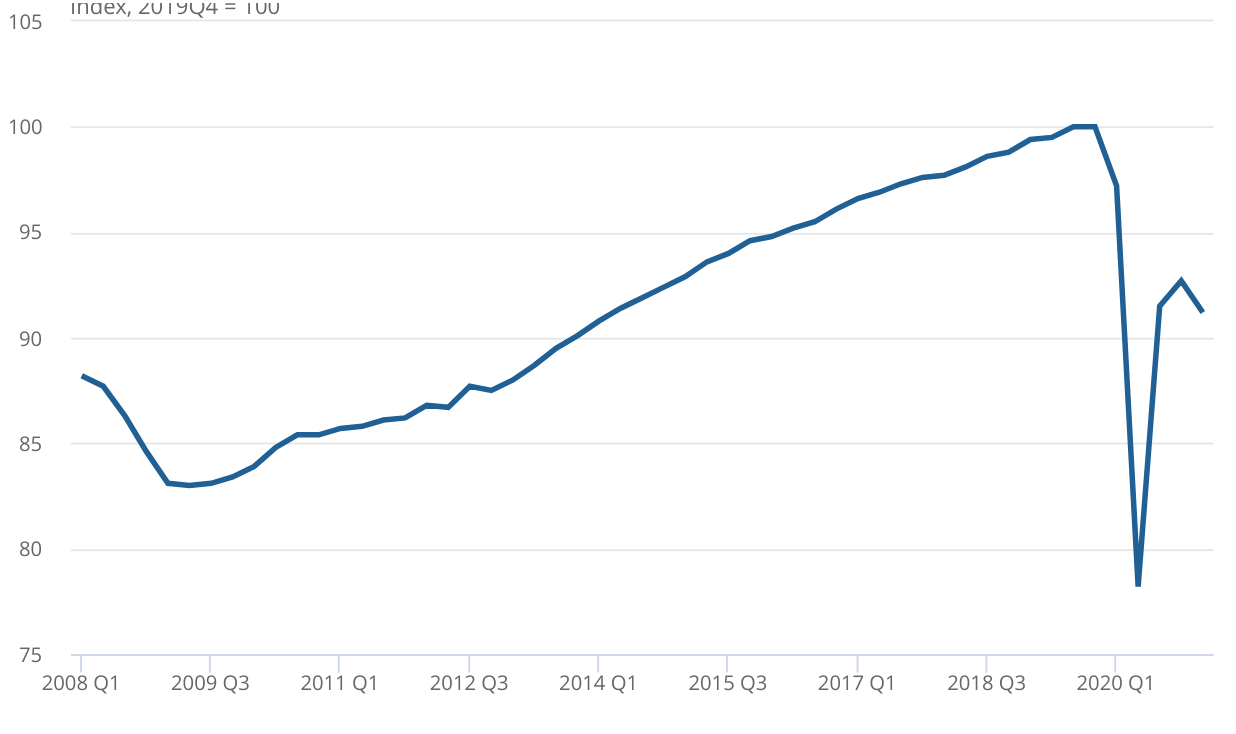THE UK economy suffered a bigger hit than orginally thought in the first three months of the year, falling 1.6% compared to the 1.5% predicted.
The latest figures from the Office for National Statistics show gross domestic product (GDP) between January and March this year.

Read our coronavirus live blog for the latest updates

GDP fell by more than first thought during the third coronavirus lockdown, according to the ONS
The level of GDP is now 8.8% below – not 8.7% as was first predicted – its pre-pandemic level, between October and December 2019.
A sharp drop in output in the education, wholesale and retail trade, the UK tourism and hospitality industry were the biggest causes for the economy to shrink.
The construction output actually grew though as work was allowed to continue throughout lockdown.
In January, England was plunged into a third coronavirus shutdown to stop the spread of the Kent variant of Covid-19.
The strain is more transmissible and it became the dominant one as the UK kicked off their vaccine programme.
In a bid to prevent the NHS from being overwhelmed, all non-essential businesses, such as pubs, bars, restaurants and shops were ordered to close.
Stay at home orders were enforced as millions of Brits were forced to work from home or were furloughed.
However, the latest data shows that households typically saved more cash during the same time frame, putting 19.9% of their income into savings.
This is the second highest on record, compared to 25.9% recorded between April and June 2020.
Jonathan Athow, deputy national statistician at the ONS, said: “Today’s updated GDP figures show the same picture as our earlier estimate with schools, hospitality and retail all hit by the re-imposition of the lockdown in January and February, with some recovery in March.
“With many services unavailable, households again saved at record levels with only last spring seeing more saved.”
“The economy will rise back”
The UK government began lifting restrictions at the start of March with the reopening of schools.
Under a phased reopening, bars and restaurants restarted outdoor dining in April and indoor services in May.
Non-essential retail stores also opened back up in April.
The economy is expected to fully reopen on July 19, after the Government delayed the date by four weeks due to surging Delta infections.
“The small downward revision to Q1 GDP growth probably won’t stop the economy from rising back to its pre-pandemic peak in the coming months,” noted Capital Economics analyst Paul Dales.
“And the larger rebound in the household saving rate increases the potential for faster rises in GDP further ahead.”
On the plus side, the UK economy grew by 2.1% in March despite the third coronavirus lockdown causing many businesses to temporarily shut.
The research supports the Bank of England’s prediction that the economy could grow at the fastest rate since World War II, expanding by 7.25% by the end of the year if all Covid restrictions are removed.
Before the latest lockdown restrictions were introduced, the economy was expected to grow in the first quarter of 2021.
Even though the economy grew in March, inflation also rose to 0.7% due to rising fuel and clothes prices.








